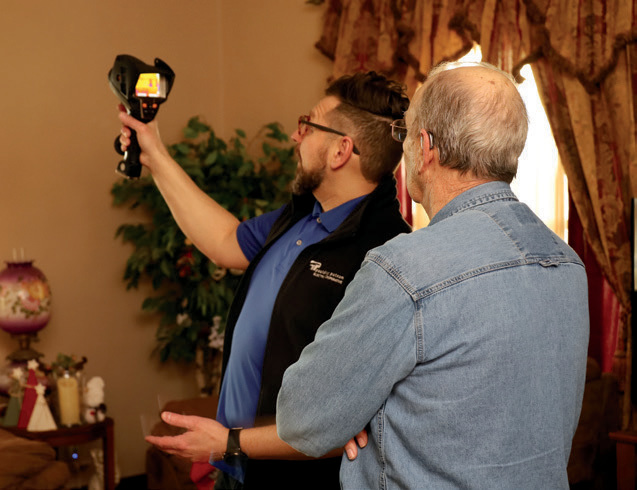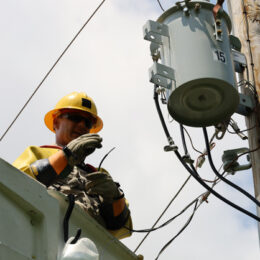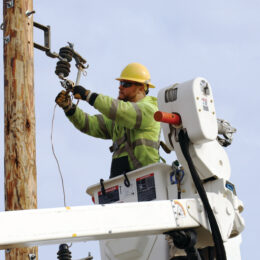
Energy Advisor
There are many, many outlets for you to get energy-efficiency tips nowadays, and many of them are very good. They range from the internet and social media videos to this magazine you’re reading. However, what you don’t see much is information on “Where do you start?” There seems to be a lot of confusion about this, but as your professional energy advisor, this is where I come into play!
When auditing a home for one of our members, I like to use what I call the “conservation pyramid.” (See graph at right). This is a process that you should follow when making improvements to your home. Each step in this process has a level of difficulty, starting with very simple and minimal investment, to more and more complex and higher investment as you go up the pyramid. The farther up the pyramid you go, the longer it will take for the investment to materialize. I will go through each step for you and explain what it looks like.
UNDERSTANDING
This is the first step: knowledge, and understanding energy use. You can do this by having a phone consultation with me, reading content from our monthly Indiana Connection magazine or the cooperative’s website, or having an energy audit done on your home. These are all easy ways to learn about energy use in your home and, best of all, they won’t cost you a penny!
LOW COST/NO COST
This part of the process usually entails behavioral changes, such as turning off electronic devices when not in use, turning off lighting when leaving a room and thermostat set-back when not home or while sleeping. Remember, the cheapest kilowatt-hour (kWh) is the one not used. You can expect 1% to 2% energy savings for every 1-degree set-back on your thermostat. If you have a heat pump, make sure you have an energy recovery thermostat; if not, you can inadvertently use much more energy during recovery times. Setting thermostat temperatures back is the most cost-effective way to save energy.
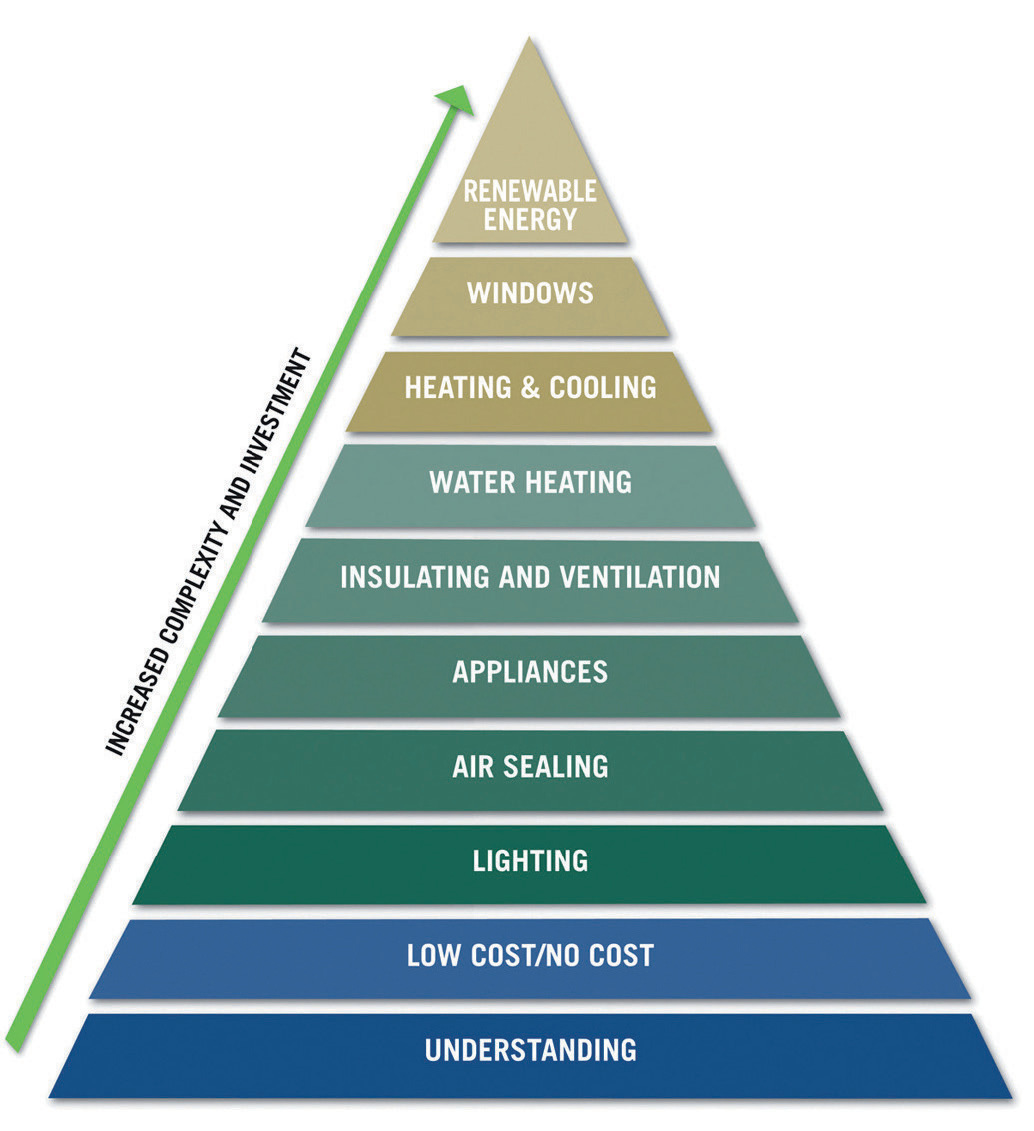
LIGHTING
Lighting upgrades are still considered low cost, and very cost effective. The cost for a 60-watt LED bulb is about $1.25, with about one-month simple payback, and about a 10-year life span.
ATTIC INSULATION
Making sure you have adequate insulation in your attic is critical to energy savings. Theoretically, if you do not have any insulation in your attic, and you have an average efficiency air-source heat pump heating and cooling system, it will cost you about $2,450 additionally per year to heat and cool your home. For the same attic with R-40 insulation added, the cost drops to only $46 annually! That’s $2,404 in annual savings, with about a six-month simple payback!
INSULATING AND AIR SEALING A CRAWL SPACE
If you take the same heating and cooling system we used earlier, with no insulation on the perimeter of your crawl space, it will cost you $288 additionally per year to heat and cool your home. By adding an R-11 of high-density spray foam to your crawlspace foundation, it will take your annual coats down to $26 a year, or $262 in savings annually, with about a six-year simple payback!
WATER HEATING
Heating and storing hot water for your home can be an expensive upfront cost. The chart on the next page breaks down the different types of systems and the savings you can see over time by purchasing the right type at the start.
HEATING AND COOLING
If you’ve done everything to seal and insulate the building structure, it is time to decide how to heat or cool your house. If you have followed the preceding steps in the pyramid to plan, then you will not need as much heat in winter and reduced cooling in summer.
Perhaps a small, energy-efficient, split-system heat pump in winter and a couple of ceiling fans in summer may be all you need. Use the chart below to see the cost breakdown of the most common types of home heating systems.
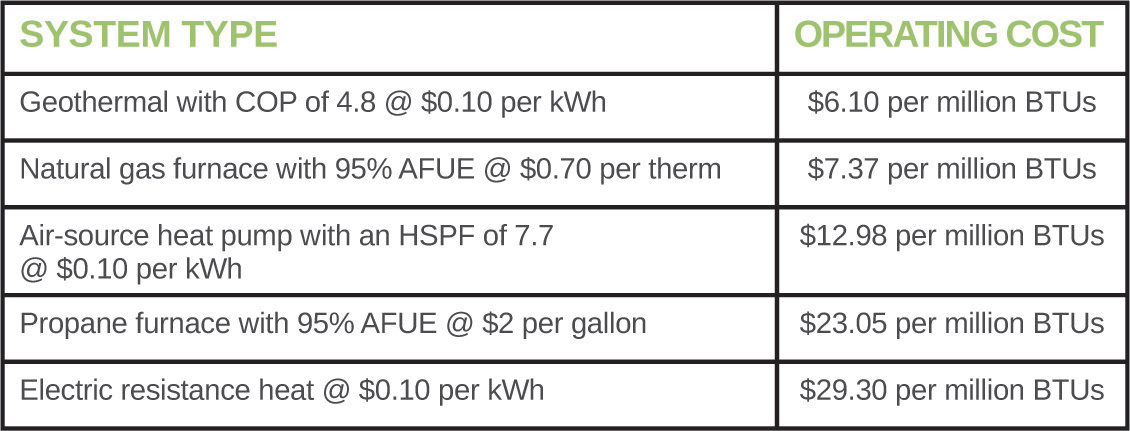
WINDOWS
Although we all need good windows, the savings on windows is minimal relative to the cost. For example, if you replace twelve 3-foot-by-five-foot single-pane windows with double-pane windows, you are looking at about $280 savings annually, with about a 22-year simple payback. In the same scenario, but replacing double-pane windows with triple-pane windows, you are looking at about $187 annual savings, with a 52-year simple payback. Again, everyone needs good windows, but you can find a better investment lower on the conservation pyramid, with benefits that materialize much more quickly.
SOLAR
Lastly, in terms of cost versus savings and complexity, solar is one of the very last things you should consider at your home.
There are many more investments that you can make to increase the efficiency of your home for which your investment will materialize much sooner. If you feel like you have done everything I went over with you, then I would consider solar.
Assuming your home uses 15,000 kWh per year and you install a 10-kilowatt solar system, you can expect to pay about $17,500 after the 30% federal tax credit. On our system, with these factors, you can expect about a 17-year simple payback.
Now that I have gone through, step-by-step, the process you should consider following to improve the efficiency of your home, I have taken the guessing game out of the equation for you. Of course, this may take you years to accomplish, and there is no home that uses energy the same. As always, please reach out to me if you want to have a conversation about energy efficiency, or what I think may be the best choices for you!

Looking to lower your monthly bill and electric use?
Call us at 800-686-2357 or email pniagu@ppec.coop to set up your free home energy audit.
